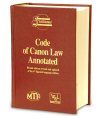Varia: Coon's sanctions, Ferraro's funeral, and Corapi's case
May I again offer a cautionary remark here: we have only NJC's characterization of the letter from CDF, and that characterization does not mention “excommunication”, but rather, speaks of “sanctions”, a term that might or might not mean excommunication. I still know of no basis upon which NJC would have been “excommunicated” for her action, as opposed to her perhaps being sanctioned with a “just penalty” under Canon 1379. If someone else has more specific information, I’d appreciate hearing of it. I think it worth trying to track this matter down as these facts might be repeated in other cases.
2. I have not followed Geraldine Ferraro's career since she left public life and I have no basis upon which to form an opinion regarding a Catholic funeral for her.
3. I know nothing about the Fr. John Corapi case and I see no point in speculating about it.
Update, 28 March 2011: Some folks are wondering whether the example of (then) St. Louis Abp. Raymond Burke’s excommunication of three women for taking pseudo-orders in 2008 gives me pause in questioning whether Norma Jean Coon was actually excommunicated for her reception of pseudo-orders.
Briefly (and I do mean, briefly), the answer is No.
First, the women in the St. Louis case attempted to take presbyteral orders (after taking ‘diaconal’), whereas Coon only attempted to take diaconal. Ordinatio sacerdotalis (1994), upon which Burke correctly relied and heavily, puts beyond any question the nullity of female ‘ordination’ to presbyterate, but it says nothing about the diaconate. Now, while I think that the nullity of a woman’s attempt to take diaconal orders is certain from tradition (pace the CLSA, “The Canonical Implications of Ordaining Women to the Permanent Diaconate”,1995), the express language of OS only goes to presbyteral orders, meaning that the Coon situation is significantly different on the facts from the St. Louis case. That difference alone would defend my continuing questions about Coon’s situation even in the face of the St. Louis case.
Lest people think I am holding open too great a distinction between diaconal and presbyteral orders, recall that Rome recently introduced a change in the text of Canons 1008 and 1009 that seems to draw a greater jurisdictional distinction between these two levels of holy Orders than was apparent till then in the Code. While I am still working out in my mind what those differences are, they do suggest that attempts at pseudo-presbyteral ordination are a greater wound on ecclesiastical unity than are attempts at pseudo-diaconal ordination and hence are more likely to result in excommunication. The notion of a “wound on ecclesiastical unity” brings us to the possibility of Coon having committed schism, an excommunicable offense under c. 1364.
A number of elements go into a canonical schism case, properly so-called, but we can prescind from reviewing those because of one major difference in the Coon situation from the St. Louis case. Burke’s invocation of schism against the St. Louis women in a ferendae sententiae process meant, among other things, that he could directly verify a crucial prerequisite to any censure, namely, the fact of contumacy. Canons 18, 1347, 1358, and Regula Iuris n. 49 in Sexto. But in Coon’s case, she withdrew from association with the radical group, apparently of her own volition, within a matter of weeks. Thus, had a formal process such as Burke conducted in St. Louis been used in Coon’s case, she could have easily avoided conviction for schism for lack of contumacy—assuming she committed schism as understood by canon law in the first place. Again, this is a major difference between the Coon situation (wherein we don’t even know whether a formal penal process was held, let alone one within days of the deed) and the St. Louis case with its ample documentation and time for deliberation.
There are additional differences between the St. Louis case, which I have said all along Abp. Burke decided correctly, and the Coon matter, which I think was not, strictly speaking, decided either way, but these two suffice to show why my questions about Coon’s canonical status—which is happily resolved now in any event—remain open.









<< Home